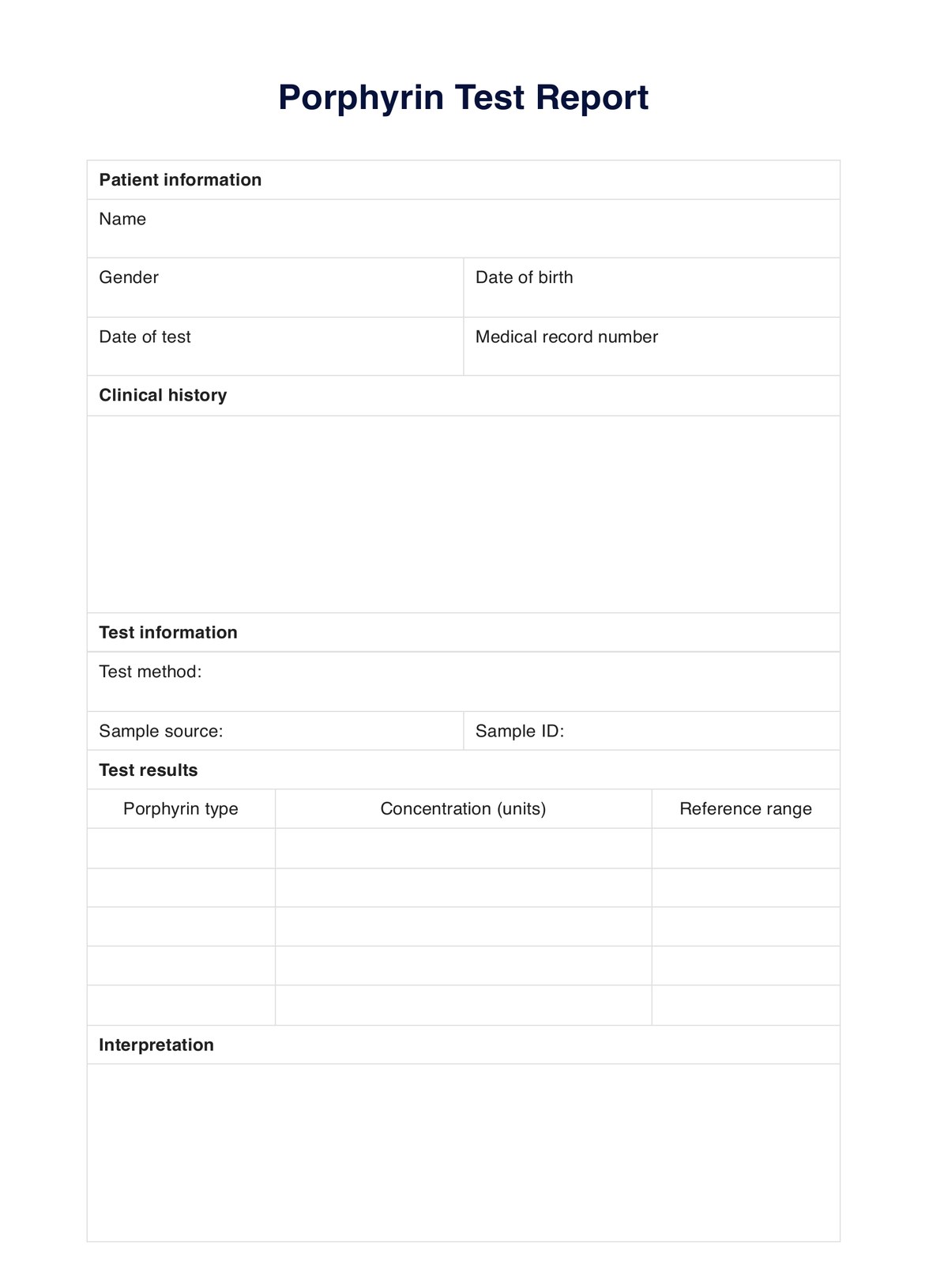A Porphyrin Test may be requested by a primary care physician, hematologist, or specialist in porphyria or related disorders to assess porphyrin levels and overall health.

Porphyrin Test Reports
Download a free Porphyrin Test Report template. Record patient information and results seamlessly with this printable PDF template.
Porphyrin Test Reports Template
Commonly asked questions
Porphyrin Tests are typically used when there is suspicion of porphyria conditions, lead poisoning, or other related disorders. They are also valuable in monitoring treatment for porphyria and assessing porphyrin metabolism. Additionally, these tests may be conducted as part of routine health check-ups for specific patient populations.
The test usually takes only a few minutes, but the entire process may take up to an hour, considering factors such as sample collection and processing time. Results are generally available within a few days.
EHR and practice management software
Get started for free
*No credit card required
Free
$0/usd
Unlimited clients
Telehealth
1GB of storage
Client portal text
Automated billing and online payments











